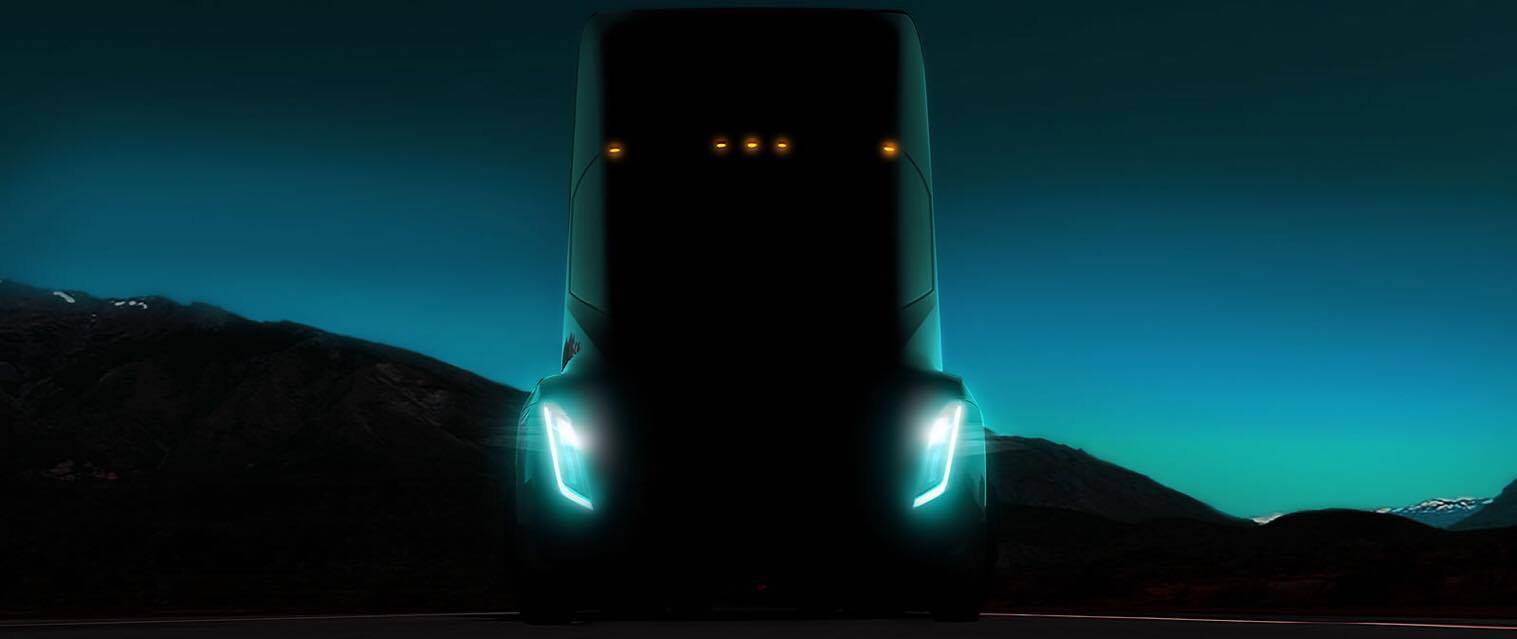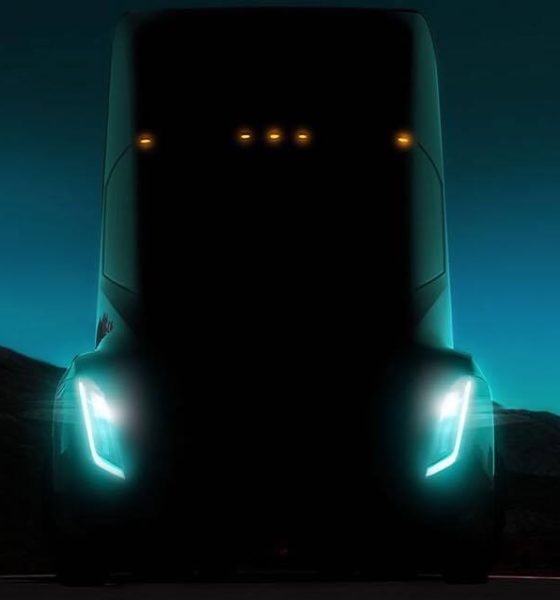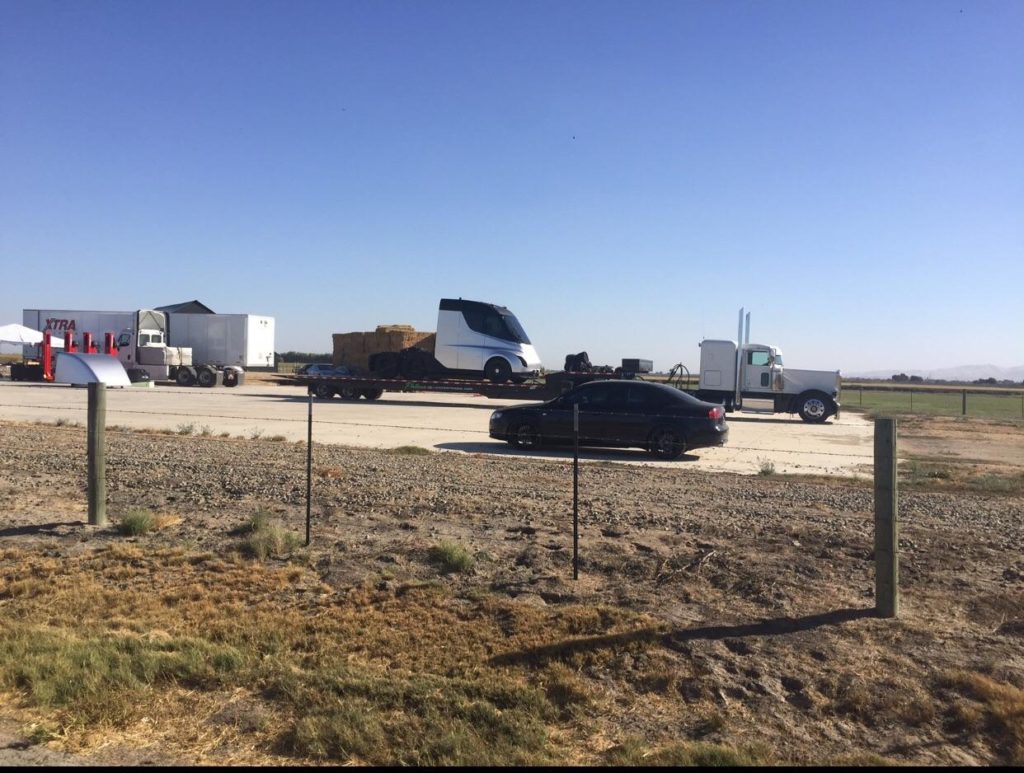

Investor's Corner
How Tesla’s Semi-truck could disrupt the commercial trucking industry
Tesla is already taking the world by storm with its fleet of consumer electric cars and the company’s push toward fully autonomous self-driving technology. Now, the Silicon Valley-based car maker and technology company has set its sights on the trucking industry, with the introduction of a fully electric semi-truck on the horizon. What will this mean to the trucking industry if Tesla succeeds?
Electric Semi-Trucks
With the official unveiling set for Oct. 26, Tesla fans and industry experts are speculating about the kind of impact its electric semi-truck could have on the commercial trucking industry as a whole.
The idea behind the Tesla Semi, which Elon Musk has affectionately called a “beast”, is to make it less expensive to operate than its gas and diesel counterparts on account of reduced maintenance, fuel, and insurance costs. This could result in operational cost reductions of 70% over existing trucks on the market, according to Adam Jonas of Morgan Stanley.
Tesla has also gathered billion of miles of driving data from the Autopilot hardware that’s equipped on its latest Model S and Model X vehicles. Using this vast dataset, Tesla aims to create a detailed 3D map of the world that will increasingly become more detailed as fleet data is collected. This dataset allows Tesla’s Vision and artificial intelligence team to train complex algorithms for its Full Self-Driving technology, which will one day allow Tesla’s fleet of consumer vehicles and its upcoming semi-truck to recognize traffic indicators, identify pedestrians and, overall, operate on near-parity with human decision making, before exceeding it.
ASLO SEE: Tesla Autopilot and artificial intelligence: The unfair advantage
Being able to offer this level of automation will be transformative for entire industries, including the commercial trucking segment. Companies that have traditionally built their shipping and logistics models based on human capabilities will be able to better manage their manpower costs, while increasing efficiency at safer levels across the organization through Tesla’s automation. Combined with the fact that a Tesla Semi will emit no tailpipe emissions, in a world where regulations on emission standards are becoming increasingly more strict and manufacturers are pushing to transition toward all-electric fleets, and the industry impact of Tesla’s semi-truck becomes even more clear.

Tesla’s Semi-truck spied ahead of its October 26, 2017 official unveiling event.
Execution
We’re still waiting for exact specifications for Tesla’s Semi like range and hauling capacity, but early reports by Reuters suggests that the electric truck will have a range between 200 and 300 miles. The relatively short range by long-haul trucking standards means that Tesla will likely target regional hauling. Any further than that would require a massive a battery that would be cost prohibitive for most companies looking to incorporate Tesla into its expense model.
Electric trucks might sound like a great innovation, but they aren’t without perils given current technology. First, electric trucks are going to require a new class of technicians to keep them primed and operating efficiently. Yes, Tesla cars are known to operate hundreds of thousands of miles without much trouble, but there’s no way to project how the wear and tear of the long haul will affect these new electric trucks.
Production will be the other big question. Tesla CEO Elon Musk is known to have an optimistic outlook when it comes to delivering his vision to the masses. But keeping to deadlines couldn’t be more important to a consumer and commercial goods industry that’s largely dependent on having a smooth running supply chain. Companies that commit to augmenting its business with a Tesla Semi or looking to transition in full to an all-electric fleet of trucks will certainly have less tolerance for delays than the general Model S, Model X, and Model 3 consumer market. This is especially the case for publicly traded companies.
Tune in on Teslarati as we bring you coverage on all Tesla Semi developments. And be sure to follow us @Teslarati or like us on Facebook to see live behind the scenes coverage from the Tesla Semi event on October 26.

Investor's Corner
Tesla stock closes at all-time high on heels of Robotaxi progress

Tesla stock (NASDAQ: TSLA) closed at an all-time high on Tuesday, jumping over 3 percent during the day and finishing at $489.88.
The price beats the previous record close, which was $479.86.
Shares have had a crazy year, dipping more than 40 percent from the start of the year. The stock then started to recover once again around late April, when its price started to climb back up from the low $200 level.
This week, Tesla started to climb toward its highest levels ever, as it was revealed on Sunday that the company was testing driverless Robotaxis in Austin. The spike in value pushed the company’s valuation to $1.63 trillion.
Tesla Robotaxi goes driverless as Musk confirms Safety Monitor removal testing
It is the seventh-most valuable company on the market currently, trailing Nvidia, Apple, Alphabet (Google), Microsoft, Amazon, and Meta.
Shares closed up $14.57 today, up over 3 percent.
The stock has gone through a lot this year, as previously mentioned. Shares tumbled in Q1 due to CEO Elon Musk’s involvement with the Department of Government Efficiency (DOGE), which pulled his attention away from his companies and left a major overhang on their valuations.
However, things started to rebound halfway through the year, and as the government started to phase out the $7,500 tax credit, demand spiked as consumers tried to take advantage of it.
Q3 deliveries were the highest in company history, and Tesla responded to the loss of the tax credit with the launch of the Model 3 and Model Y Standard.
Additionally, analysts have announced high expectations this week for the company on Wall Street as Robotaxi continues to be the focus. With autonomy within Tesla’s sights, things are moving in the direction of Robotaxi being a major catalyst for growth on the Street in the coming year.
Elon Musk
Tesla needs to come through on this one Robotaxi metric, analyst says
“We think the key focus from here will be how fast Tesla can scale driverless operations (including if Tesla’s approach to software/hardware allows it to scale significantly faster than competitors, as the company has argued), and on profitability.”

Tesla needs to come through on this one Robotaxi metric, Mark Delaney of Goldman Sachs says.
Tesla is in the process of rolling out its Robotaxi platform to areas outside of Austin and the California Bay Area. It has plans to launch in five additional cities, including Houston, Dallas, Miami, Las Vegas, and Phoenix.
However, the company’s expansion is not what the focus needs to be, according to Delaney. It’s the speed of deployment.
The analyst said:
“We think the key focus from here will be how fast Tesla can scale driverless operations (including if Tesla’s approach to software/hardware allows it to scale significantly faster than competitors, as the company has argued), and on profitability.”
Profitability will come as the Robotaxi fleet expands. Making that money will be dependent on when Tesla can initiate rides in more areas, giving more customers access to the program.
There are some additional things that the company needs to make happen ahead of the major Robotaxi expansion, one of those things is launching driverless rides in Austin, the first city in which it launched the program.
This week, Tesla started testing driverless Robotaxi rides in Austin, as two different Model Y units were spotted with no occupants, a huge step in the company’s plans for the ride-sharing platform.
Tesla Robotaxi goes driverless as Musk confirms Safety Monitor removal testing
CEO Elon Musk has been hoping to remove Safety Monitors from Robotaxis in Austin for several months, first mentioning the plan to have them out by the end of 2025 in September. He confirmed on Sunday that Tesla had officially removed vehicle occupants and started testing truly unsupervised rides.
Although Safety Monitors in Austin have been sitting in the passenger’s seat, they have still had the ability to override things in case of an emergency. After all, the ultimate goal was safety and avoiding any accidents or injuries.
Goldman Sachs reiterated its ‘Neutral’ rating and its $400 price target. Delaney said, “Tesla is making progress with its autonomous technology,” and recent developments make it evident that this is true.
Investor's Corner
Tesla gets bold Robotaxi prediction from Wall Street firm
Last week, Andrew Percoco took over Tesla analysis for Morgan Stanley from Adam Jonas, who covered the stock for years. Percoco seems to be less optimistic and bullish on Tesla shares, while still being fair and balanced in his analysis.

Tesla (NASDAQ: TSLA) received a bold Robotaxi prediction from Morgan Stanley, which anticipates a dramatic increase in the size of the company’s autonomous ride-hailing suite in the coming years.
Last week, Andrew Percoco took over Tesla analysis for Morgan Stanley from Adam Jonas, who covered the stock for years. Percoco seems to be less optimistic and bullish on Tesla shares, while still being fair and balanced in his analysis.
Percoco dug into the Robotaxi fleet and its expansion in the coming years in his latest note, released on Tuesday. The firm expects Tesla to increase the Robotaxi fleet size to 1,000 vehicles in 2026. However, that’s small-scale compared to what they expect from Tesla in a decade.
Tesla expands Robotaxi app access once again, this time on a global scale
By 2035, Morgan Stanley believes there will be one million Robotaxis on the road across multiple cities, a major jump and a considerable fleet size. We assume this means the fleet of vehicles Tesla will operate internally, and not including passenger-owned vehicles that could be added through software updates.
He also listed three specific catalysts that investors should pay attention to, as these will represent the company being on track to achieve its Robotaxi dreams:
- Opening Robotaxi to the public without a Safety Monitor. Timing is unclear, but it appears that Tesla is getting closer by the day.
- Improvement in safety metrics without the Safety Monitor. Tesla’s ability to improve its safety metrics as it scales miles driven without the Safety Monitor is imperative as it looks to scale in new states and cities in 2026.
- Cybercab start of production, targeted for April 2026. Tesla’s Cybercab is a purpose-built vehicle (no steering wheel or pedals, only two seats) that is expected to be produced through its state-of-the-art unboxed manufacturing process, offering further cost reductions and thus accelerating adoption over time.
Robotaxi stands to be one of Tesla’s most significant revenue contributors, especially as the company plans to continue expanding its ride-hailing service across the world in the coming years.
Its current deployment strategy is controlled and conservative to avoid any drastic and potentially program-ruining incidents.
So far, the program, which is active in Austin and the California Bay Area, has been widely successful.








